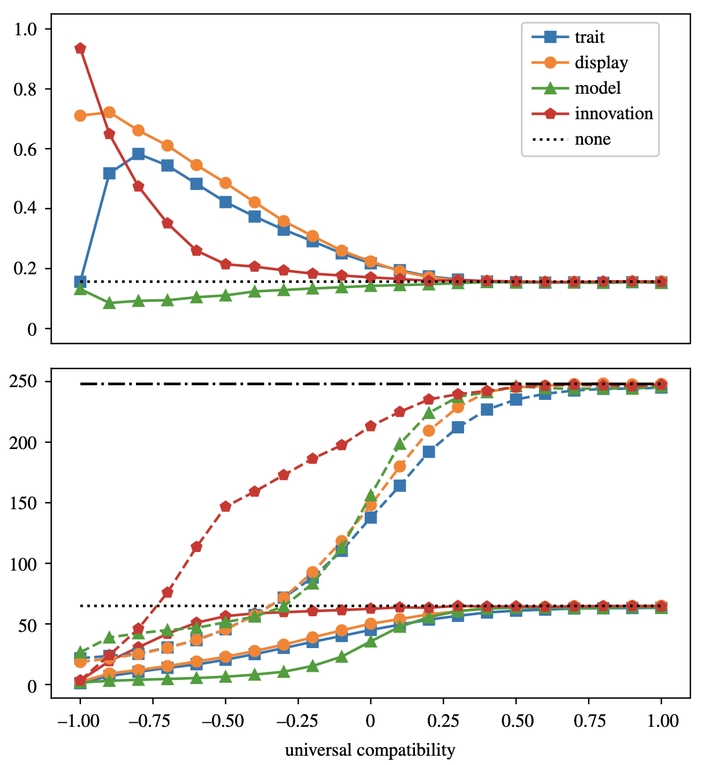
Abstract
A specific goal of the field of cultural evolution is to understand how processes of transmission and selection at the individual level lead to population-wide patterns of cultural diversity and change. Models of cultural evolution have typically assumed that traits are independent of one another and essentially exchangeable. But culture has a structure - traits bear relationships to one another that affect the transmission and selection process itself. Here, we introduce a modelling framework to explore the effect of interdependencies on the process of learning. Through simulations, we find that introducing a simple structure changes the cultural dynamics. Based on a basic filtering mechanism for parsing trait relationships, more elaborate cultural filters emerge. In a mostly incompatible cultural domain of traits, these filters organize culture into mostly (but not fully) consistent and stable systems. Incompatible domains produce small homogeneous cultures, while more compatibility increases size, diversity and group divergence. When individuals copy based on a trait’s features (here, its compatibility relationships), they produce more homogeneous cultures than when they copy based on the agent carrying the cultural trait. We discuss the implications of considering cultural systems and filters in the dynamics of cultural change.